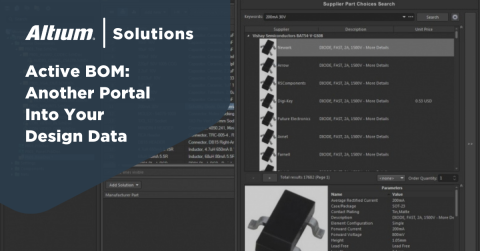BOM Part Number Management: Why It Should Be Automated
If you’ve ever worked with high voltages or have designed a high voltage circuit, you know that they always require careful planning. In my last job, we had been using a particular high voltage power supply circuit for years. When it was initially designed, the board took longer than usual to complete. While its design required some extra finicking, it was worth the effort. Everything was going well until the larger assembly's design was modified and pushed the unit’s requirements outside of its existing operational range. Accordingly, our department efficiently crafted a new revision, working from proof of concept to first article. The test department meticulously pummeled away at our design, and after a few minor adjustments the new revision was released for production.
The initial tests were good; voltages were measured within acceptable ranges, there were no noise issues, and it handled the load like a pro. For the next set of tests, the supply was switched from voltage mode to current control, and wham! There was smoke, there were plasma arcs, there was fire. Resistors screeched and smoked, diodes popped and sent shrapnel flying across the lab. I remember one engineer looking at the charred result with a bewildered half-smile, remarking softly “It worked great on the bench!” Unfortunately the bench test days were long gone, and this was a production run.
What ensued was anything but a walk in the park, since we had no idea what had caused the problem. The circuit’s high voltages and multiple operating modes made troubleshooting very difficult and frustrations mounted. After days of testing many theories regarding resonance, board layout, polarities and tolerance ranges the mistake was finally discovered. There was a one digit error in the BOM.
You can’t roll the dice on component part numbers.
Small discrepancy, large cost
So, how did this error sneak into the BOM? A few years back, there had been a brief interruption in the availability of the regulator chip at the center of the design. An engineer looked into alternatives and found a part that seemed to match our requirements. In actuality he had misread the datasheet. As a result, when he saw that the component's part-number was one letter different from the original part, he assumed that it was a non-critical variation in packaging or pin plating. This component was ordered, but never fully tested. Before it could be implemented in the design, a contract manufacturer managed to source the original part again, and production continued as usual. As a result, no one was aware of the engineer’s error; the one letter difference in part-number designated an inverted control logic pin that causes a runaway output voltage.
Our PCB design software did not have an easily customizable BOM tool. Instead, to coordinate our design software with our database, we were required to export a spreadsheet and manually edit it. This was a tremendous opportunity for human error, and in this instance it became a certainty. Right before the production run, someone changed one digit of the original regulator’s part number to match that of the replacement component. This one little letter hid convincingly like a tiger in the grass, waiting for the chance to wreak some serious havoc.
Automating your is the best way to prevent major delays and errors.
What should have been done differently
How could we have prevented this error? Well, our department used mix and match software packages, which got the job done, but did not communicate easily with one another. Choosing the correct software package with a fully integrated BOM tool, like Altium’s BOM management tools, can save a lot of money down the road. For an established company, changing one’s database process can seem like a daunting task. However, switching to a more reliable, streamlined toolset can dramatically improve outcomes and even prevent catastrophes. This unsettling experience opened the eyes of many in our department, which actually made our transition easier. Just enough time has passed that I can look back on it and laugh a little. I think that we all saw it coming, I just wish we had acted on it before things got so exciting.
If we had been using a bill of materials, it’s likely that even our first slight misstep would have been avoided. The analysis tools could have saved us from searching for an alternative component to begin with. Furthermore, the preverified component alternatives functionality might have kept the engineer’s poor choice in a replacement component from becoming a potential problem.
Have a question about component part numbers? Contact an expert at Altium.










